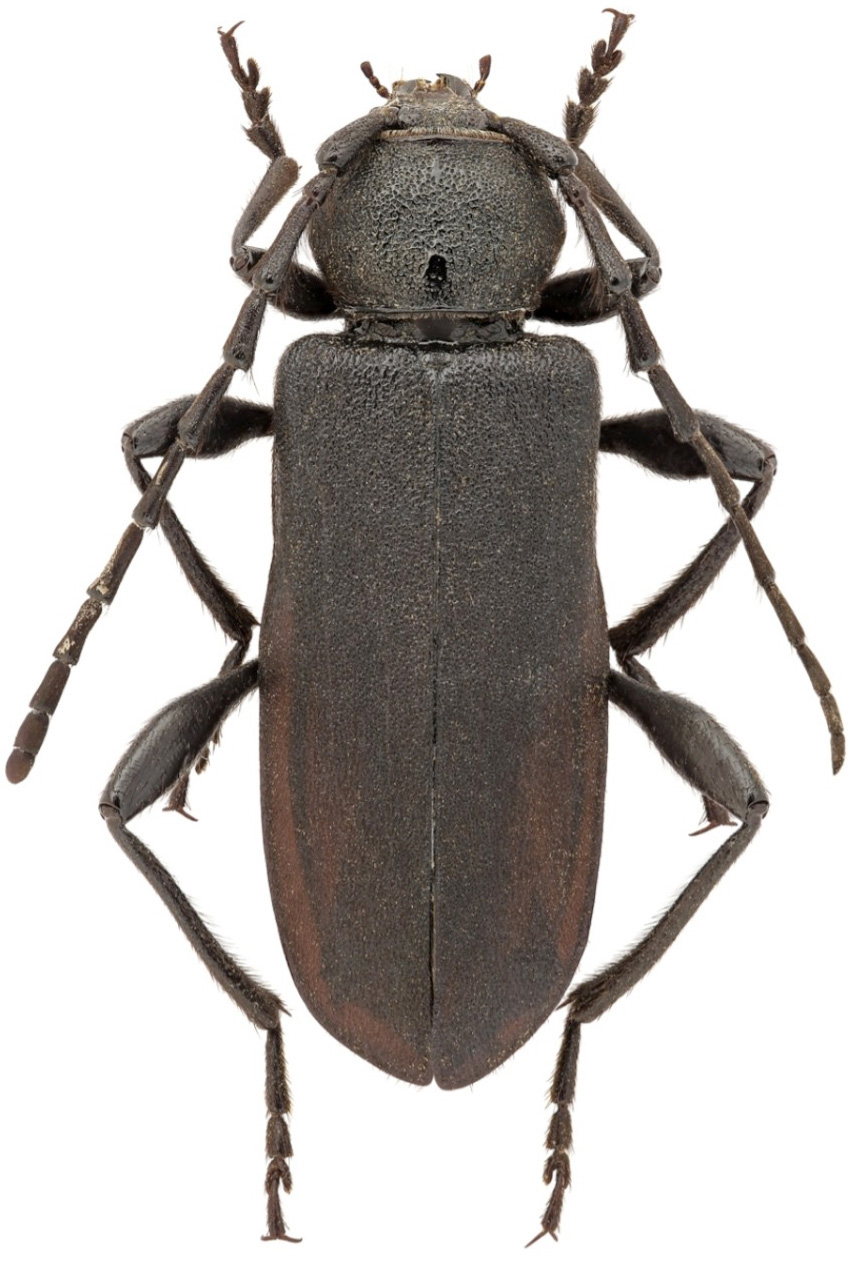Ropalopus nadari, a rare and little-known species endemic to the region of western Tian Shan Range (Kyrgyzstan, Tajikistan, Uzbekistan), has beed described from
Bukhara environs (Uzbekistan) by Maurice Pic in 1894 [▽]. R. nadari is a polyphagous species, which usually inhabits growing wild fruit trees in
the upper zone of deciduous forests. Larvae develop most frequently in trunks and branches of the wild apple tree (Malus sieversii). Life-cycle 2 years.
Adults, active in June and July, are unwilling to fly and generally stay on the host plant and only visit occasionally flowers (Ferula spp. and Prangos spp.) [❖].
| Body length: | 12 - 23 mm |
| Life cycle: | 2 years |
| Adults in: | May - June |
| Host plant: | polyphagous in deciduous trees, often in Malus sieversii |
| Distribution: | Kyrgyzstan, Tajikistan, Uzbekistan |
The depicted beetle was colelcted in Tajikistan.
[▽]
Pic M.:
Descriptions de Coléoptères.
Mémoires de la Société Zoologique de France, Paris 7: 203-207, 1894.
[download  ]
]
[❖]
Kadyrov A.K., Karpiński L., Szczepański W.T., Taszakowski A. and Walczak M.:
New data on distribution, biology, and ecology of longhorn beetles from the area of west Tajikistan (Coleoptera, Cerambycidae).
ZooKeys 606: 41-64, 2016.
[download  ]
]


